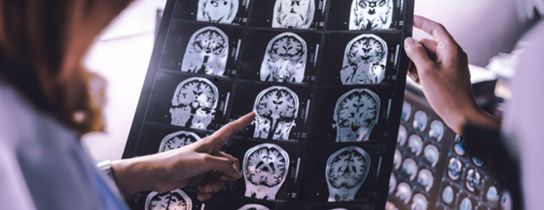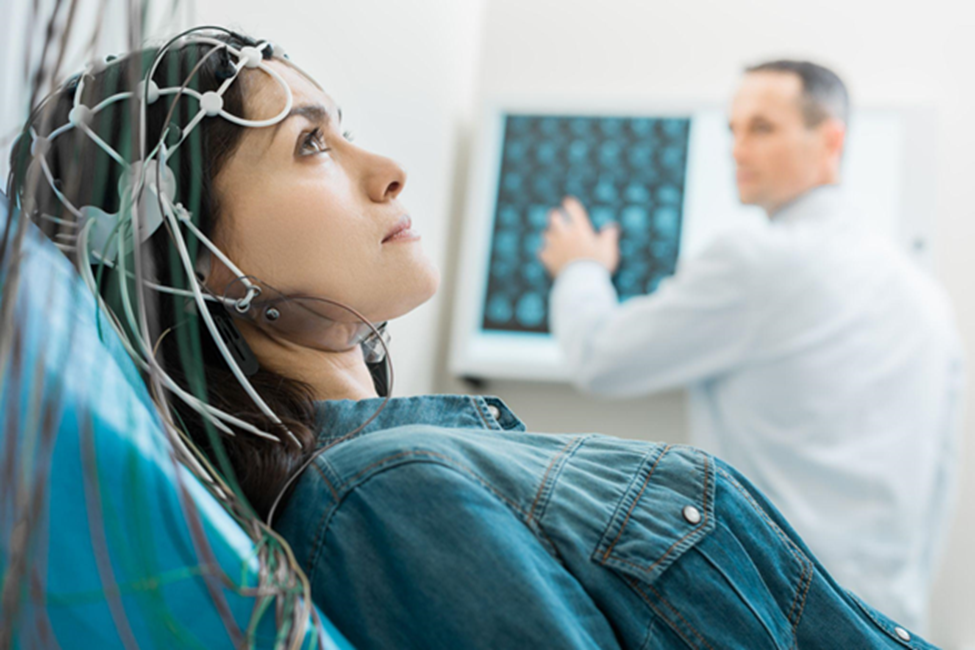
The Role of EEG for Sleep Disorders in Adults
Sleep disorders in adults can prevent individuals from being able to sleep regularly and result in other health-related problems. Electroencephalography, or EEG, is a tool used by providers to diagnose many diseases, including rare sleep disorders in adults.
What Is a Sleep Disorder?
Generally speaking, a sleep disorder is a condition that affects the duration, timing, and quality of sleep. A sleep disorder also negatively affects an individual’s ability to function normally while awake.
Sleep disorders in adults are characterized by the following symptoms:
- Unusual habits or behaviors that cause sleep disruption
- Difficulty staying awake during waking hours
- Circadian rhythm imbalances that prevent a healthy sleeping schedule
- Trouble falling and staying asleep
How Are Sleep Disorders in Adults Diagnosed?

The potential for a sleep disorder can be identified through the use of the following tools:
The Epworth Sleepiness Scale is a quiz about whether or not a patient’s sleep patterns are unhealthy and provides an indication about whether to discuss these patterns with their doctor, who may order additional testing or prescribe medication.
The STOP-BANG Questionnaire reveals the level of risk for obstructive sleep apnea (OSA) and may be followed by a recommendation for testing via a sleep study
A sleep study, or Polysomnogram (PSG), monitors and records several aspects of a patient’s sleeping pattern, including movements, oxygen levels, breathing, and snoring. The goal of the PSG is to identify whether the patient is experiencing disruptions in their sleep patterns and the cause of those disruptions. The EEG is a very important aspect of the sleep study.
What Is an EEG?

The EEG is a procedure that utilizes specialized equipment to capture brain activity that later is used in the analysis of healthy brain electrical activity and sleep/awake cycle. This diagnostic tool can help a doctor to detect the abnormalities that indicate Alzheimer’s disease, tumors, epilepsy, head injuries, and sleep disorders in adults.
How Does an EEG Work?
The EEG is a two-part unit that consists of a set of electrodes and a detection/recording machine. The electrodes are placed on the patient’s head for between 20 minutes and two hours, depending on the condition being diagnosed and whether or not individuals have to be asleep for diagnosis.
The patient is placed in a room separate from the EEG technician, who may ask them to breathe in a certain way to initiate certain brain activity.
What Types of EEG Are There?
EEG testing exists in a few different forms to evaluate different types of sleep disorders in adults and to detect abnormal brain activity like the presence of electrical discharges called epilepsy.
The previously mentioned polysomnography (PSG) is performed in a sleep clinic or hospital setting and occurs while the patient is asleep. It studies eye movements, brain wave activity, and sleep cycle stages.
A sleep EEG is performed to detect abnormal brain wave activity during the time that a patient is asleep. This test is used to identify the quality of a patient’s sleep cycle.
A sleep-deprived EEG tests patients who have gone without sleep or caffeinated beverages for one night prior. This test, conducted by a neurologist, reveals sleep disorders in adults by tracking any abnormal activity in the brain.
Types of Sleep Disorders
Narcolepsy
Narcolepsy, or dyssomnia, is characterized by involuntary sleepiness that occurs suddenly. These episodes can occur at any time or scenario, such as while driving or working.
Insomnia
Insomnia is the inability to fall asleep and the overall loss of sleep a person experiences as a result.
Sleep Apnea
Sleep apnea is a condition where a person stops breathing several times per night. This causes a person to suddenly wake as their brain responds to the lack of breathing.
Sleep Paralysis
Sleep paralysis is characterized by a person experiencing chest heaviness, inability to speak or move, and difficulty breathing between sleep stages.
Parasomnia
Parasomnia is a condition where patients engage in or experience abnormal activity, such as sleepwalking or night terrors, while they are asleep.
Sleep Deprivation
Sleep deprivation can occur on a chronic or acute basis and is the result of circadian rhythm disorder.
When Should You Consider an EEG?
Several signs of sleep disorder indicate that an EEG may be beneficial. Talk to your provider if you are experiencing one or a combination of the following:
Chronic fatigue – If you seem to always feel tired during the day due to tossing and turning several nights per week, you may have a sleep disorder that an EEG can detect.
Unusual activity – If your spouse has noticed you talking in your sleep or sleepwalking, or that you’ve stopped breathing, an EEG test is a good next step.
Symptoms of sleep disorder or poor sleep hygiene – If you’ve experienced any of the symptoms mentioned previously, or you have risk factors that may be contributing to your sleep difficulty, you may wish to consider speaking to your provider about EEG testing.
Sleep Disorder Treatments
Treatments for sleep disorders in adults will differ according to the type of disorder diagnosed. However, sleep hygiene is often the first suggestion. Establishing good sleeping habits, such as creating a relaxing pre-bedtime routine and consistently going to bed and waking at the same time, is a typical initial suggestion.
Because some disorders like sleep apnea can be caused by being overweight, exercise is another typical initial suggestion following the diagnosis of a sleep disorder. The reduction of stress and deep breathing exercises may also be suggested.
Therapies for treating sleeping disorders include bright light therapy, biofeedback, and cognitive behavioral therapy (CBT). Devices like a CPAP machine and over-the-counter and prescribed medications may also be suggested.
Facts About Testing with EEG
Testing for sleep disorders in adults with EEG is a safe and painless process, with little to no discomfort. Most often, technicians will measure and mark a patient’s head in order to place individual electrodes onto their proper places. The marker can be easily washed off after the visit.
Patients will watch videos and answer questions before the test begins. The electrodes will then change color in correlation with their changing brain waves.
A neurologist, or a provider who specializes in nerve disorders, will examine the patient’s brain waves and work with patients to understand how their neurological disease affects their quality of life and how to treat their sleep disorders.
Sleep Medicine at Crystal Run Healthcare
Insomnia can be a disability if restless sleep symptoms interfere with daily life. The sleep medicine specialists at Crystal Run Healthcare are expertly trained to investigate, diagnose, and treat sleep-related disorders.
Crystal Run Healthcare was the first EEG laboratory to be accredited in New York State and is currently one of only four healthcare companies in New York to offer access to an accredited EEG laboratory for their patients.
Crystal Run Healthcare has received accreditation for their Electroencephalography (EEG) laboratory from the EEG Laboratory Accreditation Board (LAB-EEG) of the American Board of Registration of Electroencephalographic and Evoked Potential Technologists (ABRET).
This accreditation by ABRET confirms Crystal Run Healthcare has met or exceeded strict technical standards and verifies patients are receiving the highest quality diagnostics.
If you’ve been experiencing sleep interruptions, call or visit Crystal Run Healthcare’s Sleep Medicine department to book your appointment: 845-703-6999.

 Optum Radiology at Crystal Run Healthcare
Optum Radiology at Crystal Run Healthcare Request medical records online
Request medical records online